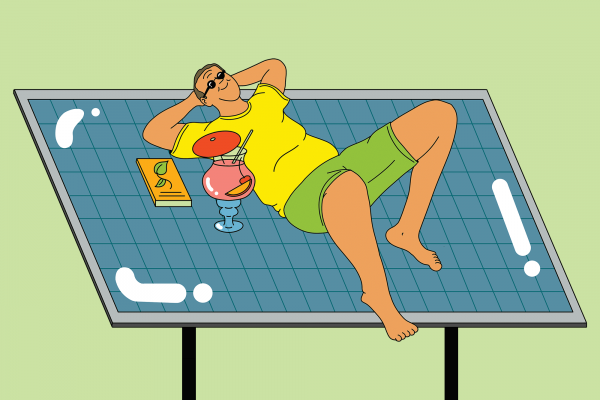What must it be like to survive your own execution?
It happened this week in Ohio. And it’s not the first time.
On Nov. 15, Ohio was set to execute Alva Campbell. Campbell is terminally ill. He’s had organs removed and lives with a colostomy bag. He can’t breathe or walk on his own. The medical personnel had prepared a special pillow-wedge for him that would allow him to sit up at a 40-degree angle so that he could breathe, during his execution. It was as if they wanted him to be as comfortable as possible as they killed him.
Campbell had feared all the complications and asked to be killed by firing squad. His request was denied.
After a torturous 80 minutes and multiple failed attempts at finding a suitable vein, the death team gave up. Alva Campbell is still alive. At least for now, he’s beaten the death machine in one of the few states that is still executing people.
Campbell is not the first person to survive his execution. Romell Broom also survived an Ohio execution.
2017-11-15t062820z_1_lynxmpedae0f1_rtroptp_4_ohio-execution.jpg

and Correction/Handout via REUTERS
In 2009, Broom laid on the gurney for two hours as the execution team stuck needles in his body. At one point, Broom even offered to help with his execution, no doubt tired of all the poking. After more than a dozen attempts to kill him, they gave up.
Broom is alive today. He wrote a book aptly titled Survivor on Death Row. In fact, his lawyers took his case to Ohio’s Supreme Court, arguing that it is cruel and unusual punishment to face your execution twice. Perhaps Campbell will do the same. It seems like a strong argument to me. If the state fails to kill you on the first attempt, maybe they shouldn’t get another chance?
Surviving an execution is unusual. It’s hard to imagine what it must be like – for the one being executed, for the victims family, the execution team … all the additional trauma.
One young man in Louisiana named Willie Francis survived an attempted execution by electric chair. He was only 17 at the time the electric chair malfunctioned. He was taken back to prison, and after a series of unsuccessful legal battles, he returned to the electric chair almost exactly a year later to meet his gruesome death, at the age of 18.
While surviving an execution is exceptional, botched executions are not. They are very disturbingly common.
In April 2014, Clayton Lockett’s Oklahoma execution made national news. As things went wrong, his execution was stopped while he was still alive, and he later died of a heart attack, still strapped to the gurney.
In the case of Richard Glossip in Ohio, the state ordered the wrong drugs. Instead of potassium chloride, which stops the heart, they ordered potassium acetate, a food preservative. He’s still alive, which is great since many pieces of evidence point to his innocence anyway.
Some folks facing execution consider ending their own lives rather than leaving it in the hands of the state.
While on death row in Georgia, Brandon Rhode tried to commit suicide before his execution. The prison treated him, and brought him back to health, only to get him healthy enough to face his executions. There is something quite sickening about it all.
You start to wonder what it does to the people who have the terrible job of executing someone. What must be going through the minds of those on the execution team as they try so desperately to carry out a “successful” execution? They each have a conscience and a soul.
It is not surprising that doctors in North Carolina have refused to participate in executions, insisting that it is a violation of their medical oath, to “do no harm.” They have been instrumental in helping halt executions, at least for now. And the medical community has backed them up.
As I wrote my death penalty book, Executing Grace, I talked with one of the men responsible for overseeing executions in the state of Florida — Ron McAndrew. He was a prison warden in Florida in the 90s, and one of his duties was supervising executions by electric chair. He also experienced a botched execution.
During the execution of a young man named Pedro Medina, things went terribly wrong. As Pedro sat in the electric chair, flames shot from his head, and smoke came from his eyes, nose, and ears. The execution took nearly half an hour. In Ron’s words, “We burned him to death.”
Ron was haunted.
The men whom he had killed, literally began to visit him in his sleep.
“I started to have some horrible nightmares,” he said. “It was the faces of the men that I executed. I woke up and saw them literally sitting on the edge of my bed.”
He was done with the electric chair. But he wasn’t done with the death penalty, not yet anyway.
He went to Texas and was trained in lethal injection, hoping to bring a more humane means of execution to Florida. But as he supervised executions by lethal injection, he was still tormented. It never felt right. Eventually he was done with the death penalty. He realized that there is just no good way to kill someone.
Now Ron McAndrew has a new vocation. He is an abolitionist. He is an expert witness, testifying in more than 100 cases about what he knows. One of those things is this: The death penalty is wrong.
The recent failed execution in Ohio is a reminder that the death penalty is a failed experiment in America.
The death penalty does not deter crime. It costs more, usually three times more, than the alternatives like life in prison. And perhaps worst of all, it mirrors the very violence it seeks to denounce. The “cure” is as bad as the disease.
It’s worth noting that the death certificate of an executed person lists the “manner of death” as “homicide.” How can we condemn killing when it is done by an individual but condone it when it is done by the state? No one is defending the heinous, evil crimes that landed Alva Campbell on death row. But killing him makes us killers.
Killing is the wrong — no matter whether it is done by a criminal or by the state.
When it comes to executing our own people, we are not in the best company. China leads the world in executions. Next is Iran, Iraq, and Saudi Arabia. The U.S. is usually fifth. These countries are not known as the champions of human rights — not the best company to keep.
We can do better than killing to show that killing is wrong. Most of the world has found ways to deal with dangerous people without killing them.
Ohio Gov. John Kasich claims to be a man of deep faith. I’ve sent him my book, and reached out to him, as have many other pastors and clergy. It becomes hard to reconcile execution with the Gospel of Jesus who said, “Blessed are the merciful for they will be shown mercy.”
Gov. Kasich calls himself pro-life. But abortion is not the only life issue. We need leaders today who stand consistently for life, and denounce violence in all its ugly forms. We can’t be pro-life on one issue and pro-death on another.
Killing an old man with a colostomy bag who cannot walk or breathe on his own is not pro-life. We can do better.
As for Romell Broom and Alva Campbell, they both have new execution dates. Alva Campbell is scheduled for execution on June 5, 2019.
Hopefully, we will have pulled the plug on the death penalty before then.
Got something to say about what you're reading? We value your feedback!







